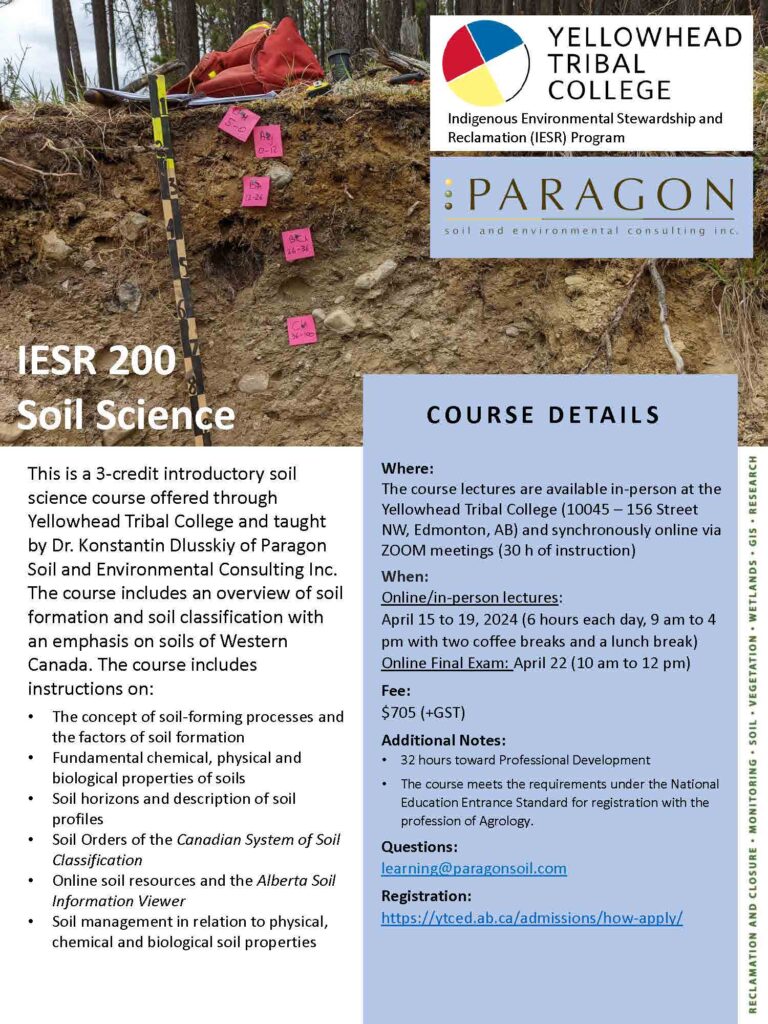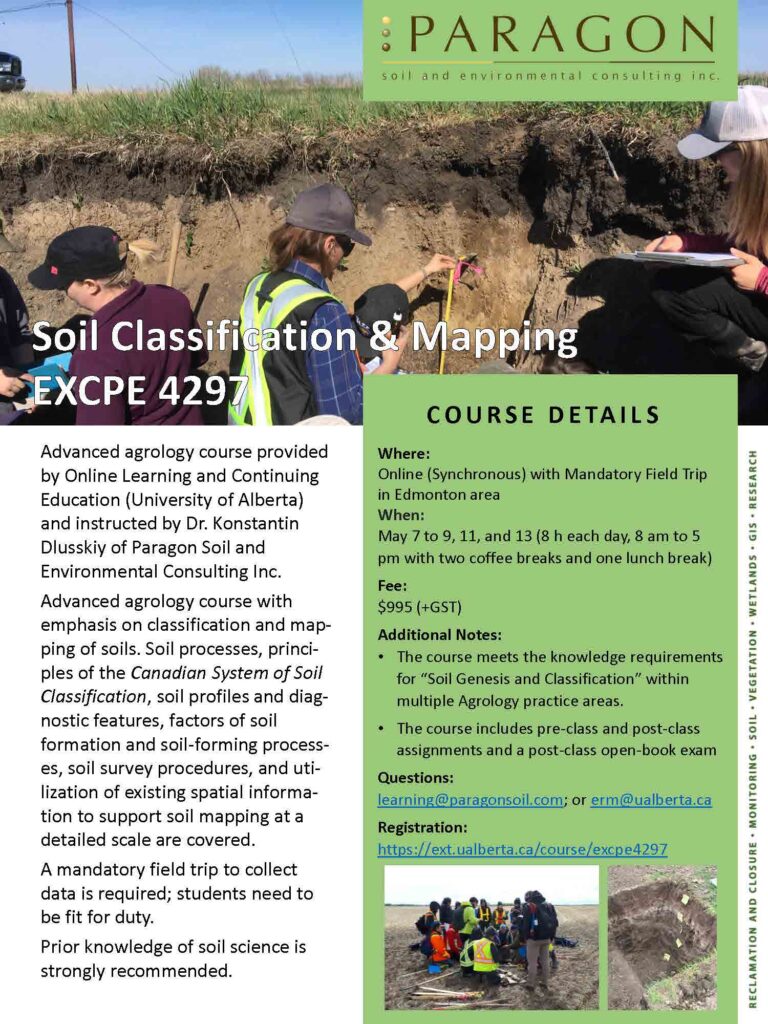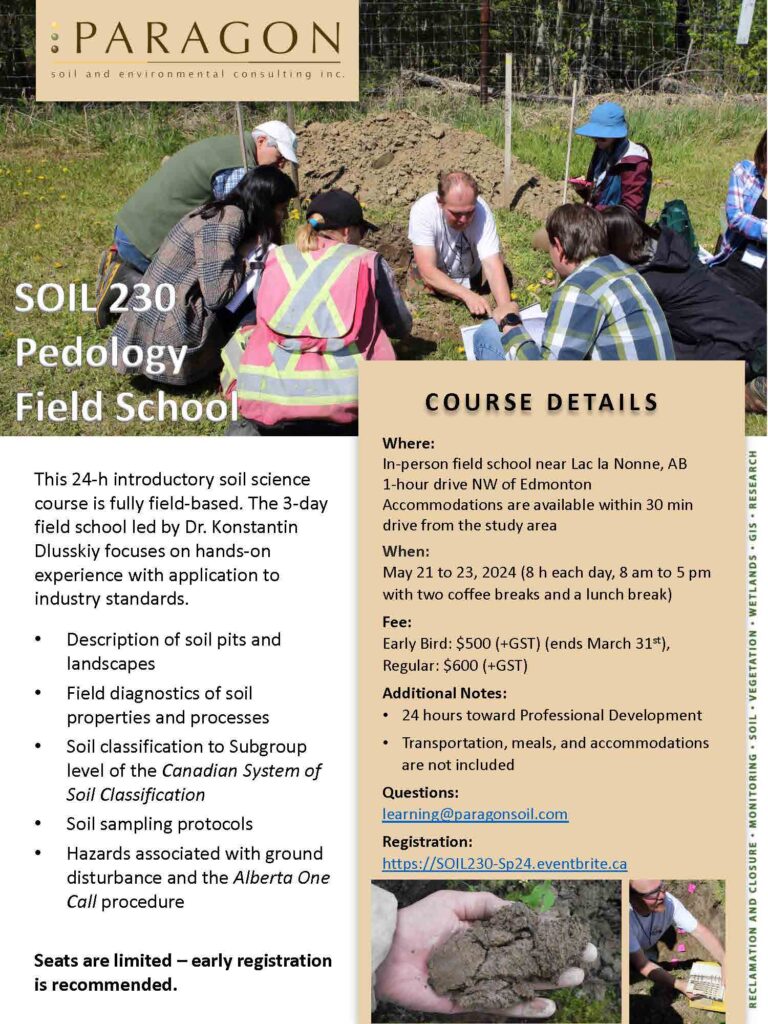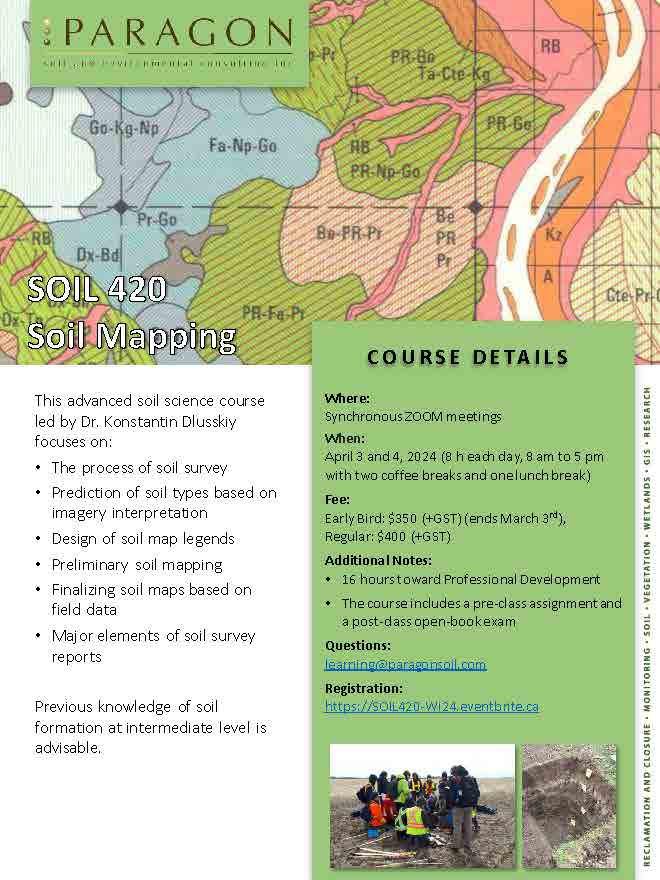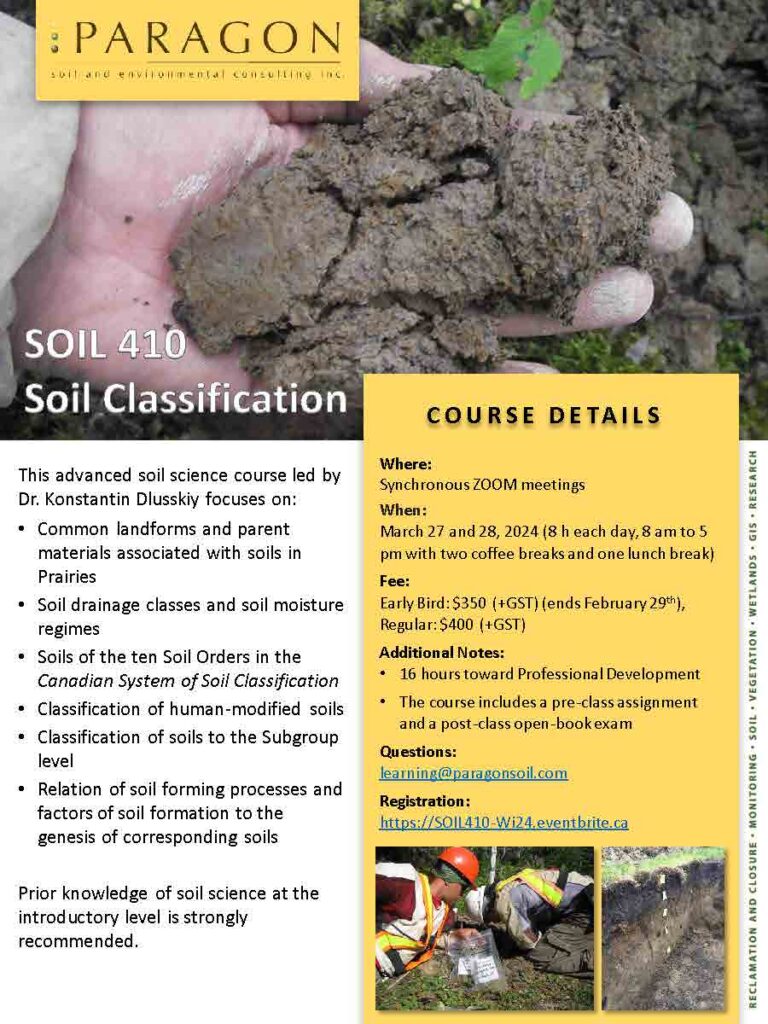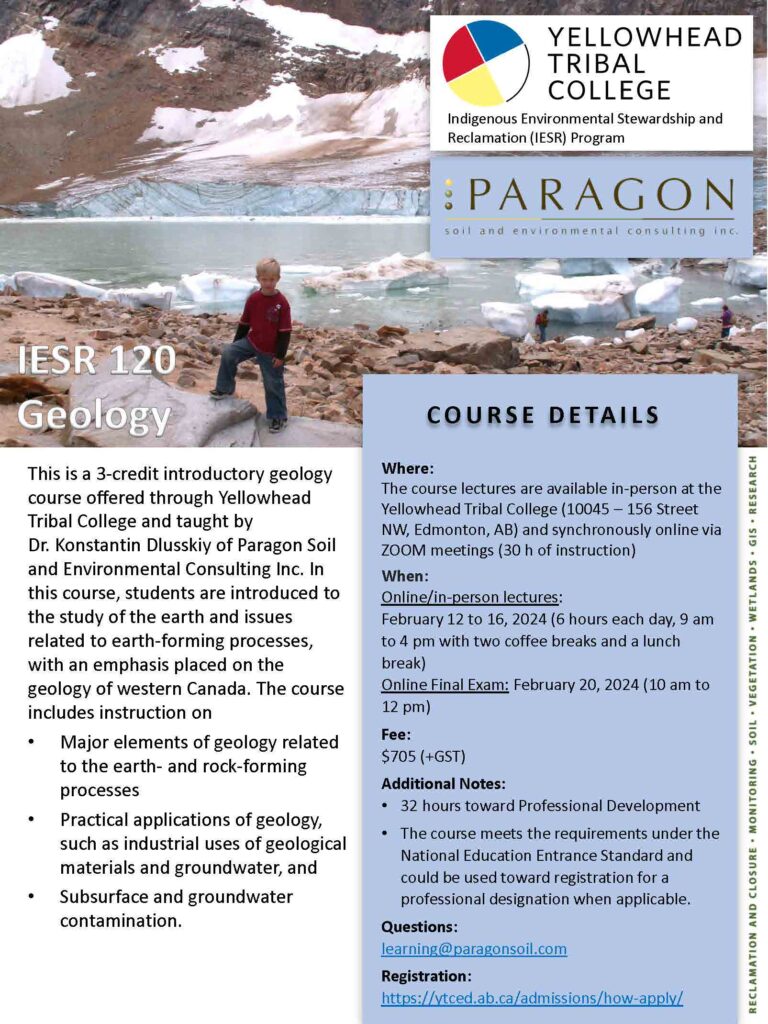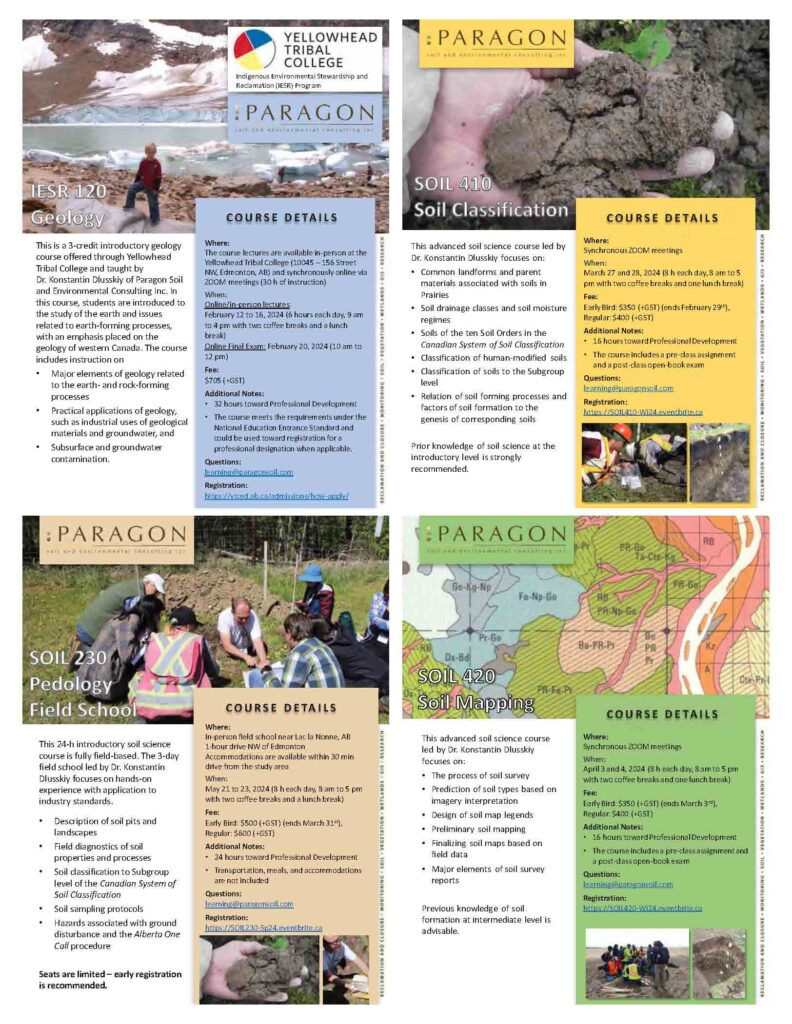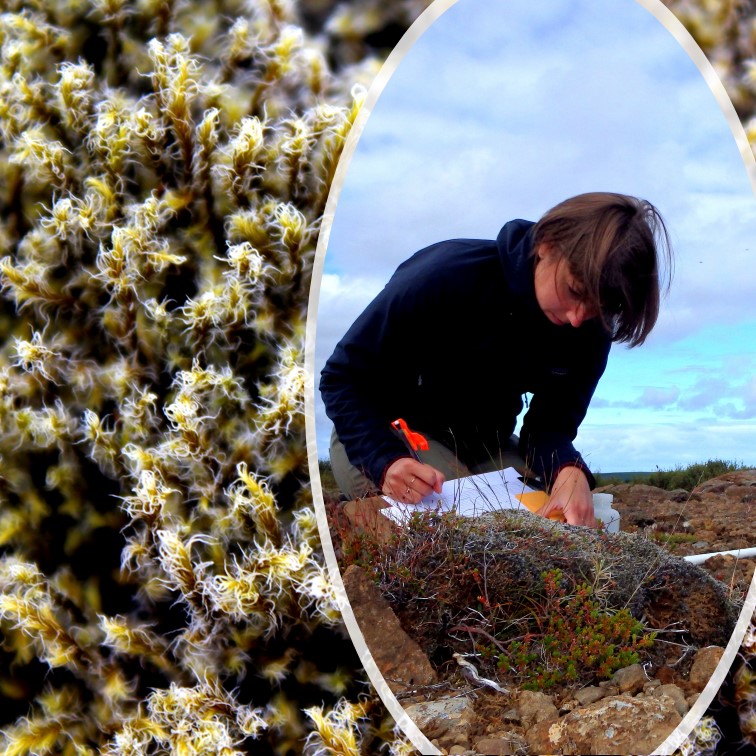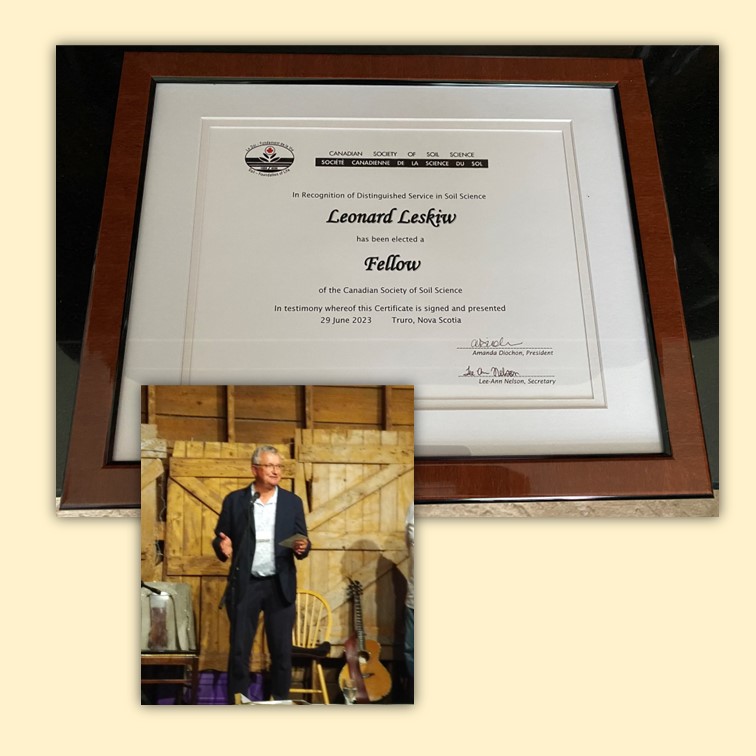March 18, 2024
Hello soil enthusiasts,
Just a friendly reminder that the deadline to register for the Soil Mapping short course (SOIL420) is quickly approaching. The course is provided by Paragon Soil and Environmental Consulting online on April 3 and 4, 2024. The course includes a mandatory pre-class assessment that will be made available to registered students on March 27. The deadline for registration is April 2, 2024.
This advanced soil science course led by Dr. Konstantin Dlusskiy focuses on the process of soil survey, prediction of soil types based on imagery interpretation, design of soil map legends, and preliminary soil mapping.
Details: www.paragonsoil.com/courses
Questions: learning@paragonsoil.com
Registration: https://SOIL420-Wi24.eventbrite.ca

